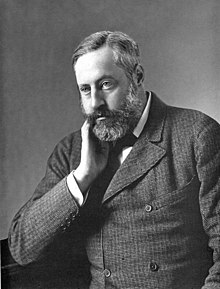
Back جون كريتشتون ستوارت ARZ John Crichton Stuart, 3ydd ardalydd Bute Welsh John Crichton-Stuart, 3. Marquess of Bute German John Crichton-Stuart (3e marquis de Bute) French John Crichton-Stuart, III marchese di Bute Italian John Crichton-Stuart (3. markiz Bute) Polish Крайтон-Стюарт, Джон, 3-й маркиз Бьют Russian John Crichton-Stuart, 3rd Marquess of Bute SCO 第三代比特侯爵约翰·克赖顿-斯图尔特 Chinese
The Marquess of Bute | |
|---|---|
 | |
| Known for | Philanthropy |
| Born | 12 September 1847 Mount Stuart, Scotland, United Kingdom |
| Died | 9 October 1900 (aged 53) |
| Buried | Isle of Bute; Mount of Olives, Jerusalem |
| Residence | Mount Stuart House (main residence) Cardiff Castle Chiswick House Dumfries House House of Falkland St John's Lodge |
| Spouse(s) | Gwendolen Fitzalan-Howard |
| Issue | John, 4th Marquess Lord Ninian Lord Colum Lady Margaret |
| Parents | John, 2nd Marquess Lady Sophia Rawdon-Hastings |
John Patrick Crichton-Stuart, 3rd Marquess of Bute, KT (12 September 1847 – 9 October 1900) was a Scottish landed aristocrat, industrial magnate, antiquarian, scholar, philanthropist, and architectural patron.
When Bute succeeded to the marquisate at the age of just six months, his vast inheritance reportedly made him the richest man in the world. He owned 116,000 acres mostly in Glamorgan, Ayrshire and Bute.[1] His conversion to Catholicism from the Church of Scotland at the age of 21 scandalised Victorian society and led Prime Minister Benjamin Disraeli to use the Marquess as the basis for the eponymous hero of his novel Lothair, published in 1870. Marrying into one of Britain's most illustrious Catholic families, that of the Duke of Norfolk, Bute became one of the leaders of the British Catholic community. His expenditure on building and restoration made him the foremost architectural patron of the 19th century.
Lord Bute died in 1900, at the age of 53; his heart was buried on the Mount of Olives in Jerusalem. He was a Knight Grand Cross of the Holy Sepulchre, Knight of the Order of St. Gregory the Great and Hereditary Keeper of Rothesay Castle.[2]